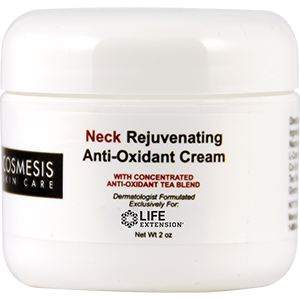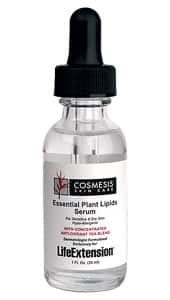 | October 2, 2009 | Tea catechins promote weight loss in overweight individuals | | An article appearing online on August 13, 2009 in advance of publication in the journal Obesity reported the findings of Chinese researchers of improvements in weight and body composition in men and women who consumed green tea that contained high amounts of catechins. Catechins are flavonoids which naturally occur in tea that have strong antioxidant properties. An average cup of green tea provides 50 to 100 milligrams catechins. Researchers at Fudan University in Shanghai, China divided 182 moderately overweight Chinese men and women between the ages of 18 and 55 to receive one of four 90 day regimens: two daily servings of a control drink providing 30 milligrams catechins and 10 mg caffeine per day, one serving of the control drink and one serving of a high-catechin green tea providing 458 milligrams catechins and 104 milligrams caffeine per day, two servings of a high-catechin green tea providing 468 milligrams catechins and 126 mg caffeine per day, or two servings of an extra high-catechin green tea providing 886 milligrams catechins and 198 milligrams caffeine per day. By the end of the study, total body fat and body fat percentage were lower in the group that received the highest amount of catechins compared to control group. In the highest catechin group, intra-abdominal fat area was an average of 5.6 square centimeters lower, waist circumference averaged 1.9 centimeters less, and weight was 1.9 kilograms lower than those who received the control beverage. "In this latest research, green tea providing significant catechin levels helped promote weight loss and positively affected body shape," lead researcher Dr Niels Boon concluded. "Using state-of-the-art measurement techniques, we analyzed the effect of the green tea consumption on body fatness and the distribution of fat across the body. We observed significant decreases in body weight and fat mass. These effects were more pronounced in the group consuming the highest amount of catechins and the results also suggest that the effects were particularly strong on fat located in the abdominal region. In addition, they did not consume any other beverages containing catechins or caffeine during the intervention period - so we can be confident that the effects seen are a consequence of the green tea intervention." | |  |  | | Life Extension believes that, in addition to a sensible, balanced diet and exercise, the only way to successfully lose weight is to address the underlying hormonal imbalances that promote weight gain. Ideally, by using bioidentical hormone replacement, dieters can restore their hormonal profile to what it was at the age of 25, an age at which weight gain is less often a problem. In addition, numerous dietary nutrients have been shown to encourage weight loss. Green tea and green tea extract have shown an ability to increase metabolic rate. - A study in mice found that the primary polyphenol found in green tea (epigallocatechin gallate, or EGCG) decreased diet-induced obesity by decreasing energy absorption and increasing fat burning (Klaus et al 2005).
- Another study in mice evaluated the effects of caffeine, polyphenols, and L-theanine, the three major components of green tea. Additive benefits were found from green tea polyphenols, caffeine, and theanine on fat accumulation (Zheng et al 2004). Furthermore, another study showed that feeding 4 percent green tea powder to mice resulted in weight loss as well as lower concentrations of total cholesterol in the liver, triglycerides in serum and liver, and fatty acids in serum (Sayama et al 2000).
- A well-known study examined whether or not green tea extract, rich in caffeine and polyphenols, could increase 24-hour energy expenditure and fat oxidation in humans. On separate occasions, subjects were randomly assigned to one of three treatments: green tea extract and caffeine (90 mg EGCG and 50 mg caffeine), caffeine (50 mg), and placebo, which were ingested at breakfast, lunch, and dinner. The results showed that treatment with the green tea extract (which included caffeine) resulted in a significant increase in metabolic rate, as evidenced by a significant increase in 24-hour energy expenditure (Dulloo et al 1999).
- An open-label trial demonstrated that after three months, green tea extract decreased body weight by 4.6 percent and waist circumference by 4.48 percent (Chantre et al 2002).
| Fall 2009 Skin Care Sale A great face will take you everywhere! So don’t let tell-tale signs of aging and environmental stressors win against your skin. Conceal those little problems, enhance your own good looks, and nurture and protect your skin at a savings up to 70%. Browse our selection of skin care products and see how easy it is to obtain cutting-edge dermatological formulas at a fraction of the price charged by commercial companies: | |  | Peak ATP® with GlycoCarn   | | PEAK ATP® with GlycoCarn® provides two critical nutrients for optimal endothelial function and structural integrity. GlycoCarn®, a patented form of propionyl-L-carnitine, improves endothelial function by facilitating the transport of fatty acids into the mitochondria where they are burned as energy. It also augments endothelial nitric oxide synthesis, enhancing blood flow to active tissues (e.g., skeletal muscle and heart). Adenosine triphosphate (ATP) is a key component of the cellular energy cycle. ATP acts on microvascular endothelial cells to produce a vasodilation (widening of the arteries). PEAK ATP® has been tested in human and animal studies. It is readily absorbed and boosts circulating ATP levels. | | |   | 
In ancient Greek mythology, the pomegranate represents life and regeneration. Its use as an herb dates back more than 3,000 years. But contemporary science has rediscovered the pomegranate’s surprising array of health benefits. Numerous studies show that pomegranate is one of nature’s most powerful antioxidants and it helps regulate LDL oxidation. The remarkable effect of pomegranate in dealing with various problems makes one wonder whether there is more benefit to this fruit than just free radical suppression. One answer may lie in the fact that pomegranate is absorbed in the bloodstream far more efficiently than other fruit extracts. One study showed a pomegranate extract is 95% absorbed, which is far greater than any other polyphenol-containing fruit extract of its kind. Another reason pomegranate has displayed such incredible clinical findings is that it contains a unique polyphenol group called punicalagins. Punicalagins are the major players behind the pomegranate’s antioxidant capability. | | | |  | | Life Extension Update | | What's Hot | | Life Extension magazine | |























